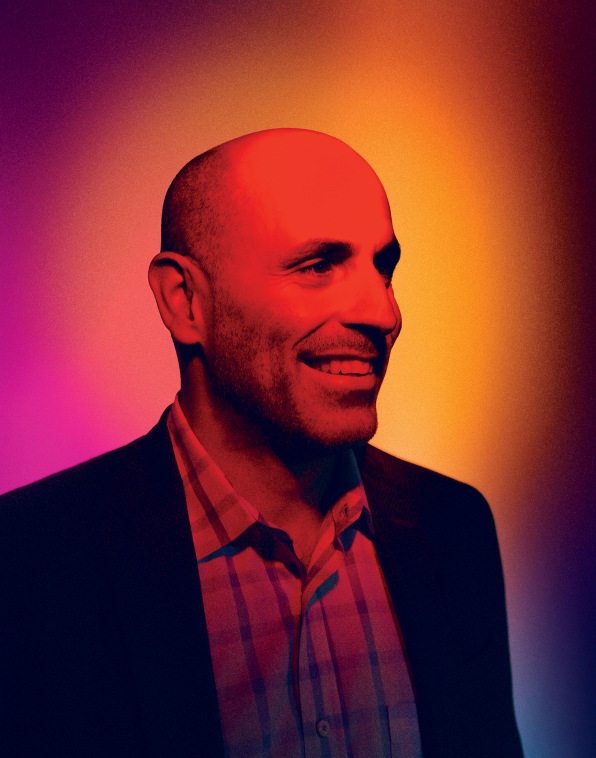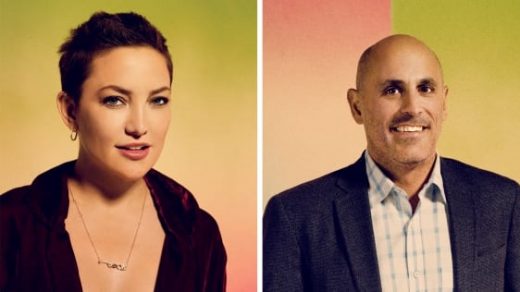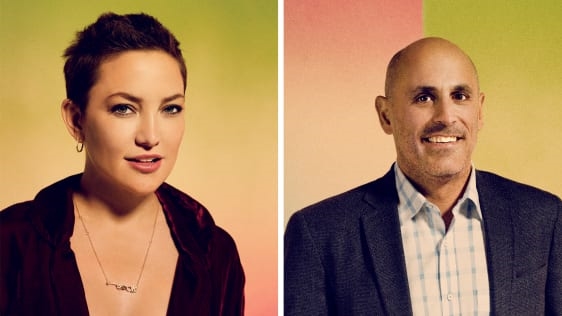As Amazon And Walmart Duke It Out, Niche Retail Can Thrive
As e-commerce continues to show double-digit year-over-year growth in the multitrillion-dollar U.S. retail market, two notable figures in the space–Jet.com cofounder and Walmart e-commerce CEO Marc Lore and Fabletics cofounder Kate Hudson–share with Fast Company‘s Robert Safian why being a digitally native company offers a leg up.
Fast Company: It’s a challenging time for retailers. Do digitally native brands have an advantage?
Marc Lore: I think that digitally native brands are the future. Having that direct connection to the customer is very important. Millennial shoppers want to not only buy the product but know where the product’s made, the environmental position of the company, the social impact that the company’s making. And then when you look at the margin structure where you can sell to the entire country from one location, it becomes really powerful financially. You need to do two, three, four hundred million-ish [in revenue], and then you start to generate an incredible profit margin. The problem is it takes a lot of capital to get [there] as a single branded retailer. Once the venture community starts to appreciate that it’s a lot of capital up front but then huge upside, you’re going to see a lot more money being pumped into that area.
Kate Hudson: Connection is everything. If you have both the online and the physical retail, [it creates] a two to three times more valuable customer.
ML: Yes, we’re finding at Walmart that when people shop both online and in-store, they shop twice as much. When we get people who shop only in-store to shop online, they actually buy more in the store after that.
FC: Kate, Fabletics has an unusual model in that it’s membership-based, right?
KH: You can purchase at retail prices, or you can be part of the flexible membership VIP program, which offers lower prices and exclusive products.
FC: Your clothing is only available through Fabletics–no third parties. Why?
KH: Well, for one thing, it’s working. We’ve had 21% growth each year. And because we’re tech-focused, we’re able to know what our customers want and create less waste. We’re able to place our stores strategically. If people are taking a sports bra into the dressing room but not buying it, or buying it and returning it, we realize that they like it, but it’s not fitting right, so we’re able to fix it right away. Knowledge allows you to take more risks. We can create things and go, “Let’s just see what happens with this.”
FC: How is your use of data evolving?
ML: Voice will be the next big way to leverage data. It will enable people to communicate either in their car or home or on their device and shop in a conversational way with a robot in the way that they would with a specialist on the showroom floor of a retailer. That robot will know you as well as your mom and dad.
KH: [Sighs]
FC: You’re sighing—
KH: Robots.
FC: You don’t want to have a robot in your store?
KH: It makes me kind of sad. But we roll with the times.
ML: In 10 years, you’ll be able to put on a pair of glasses and be immersed into experiences that display products in their native environment. So you can just put on the glasses and say, “I’m interested in going camping” and be transported to a campsite and be able to walk the site. They’re doing holograms now inside of VR that are super real. The quality of the imagery and the experience would blow people’s minds. The bandwidth isn’t there to commercialize it yet, but in 10 years it’s going to change how people shop. It’s going to completely change the game.
FC: So we’ll go into Fabletics and put on our headgear?
KH: Yeah, I will be the hologram.

FC: This vision is expensive to build. Does that give larger incumbents like Walmart an edge?
ML: Walmart wouldn’t be building the hardware. There are plenty of companies out there building the hardware, and we’re thinking about where the hardware is going to be in 5 or 10 years that intersects with the software. We are about merchandising and creating immersive shopping experiences. To date, you’ve had to do it in very fixed and rigid ways in a brick-and-mortar store, but in the future, you’ll be able to create these really immersive, dynamic, interactive shopping experiences that are personalized to the individual. And it won’t be that expensive because you’ll be able to leverage the software across millions or tens of millions of users.
KH: We’re in the business of wanting to please our customer and know them. That’s how we create loyalty. But you also want to excite them and bring them things they haven’t seen before.
ML: We’ve got a lot of work to do on Walmart.com with the basic experience, just making sure you can find the product, the information’s there, it’s priced right, and it’s delivered with a great experience. I spend most of my time on this kind of stuff, building the foundation. At the same time, I’m focused on Store 8, which is an incubator looking at the future of retail, like virtual reality and voice and how the brick-and-mortar store is going to change. What assets can we leverage in a way that no one else can? For us, it comes down to the 4,600 stores. Those stores are within 10 miles of 90% of the [U.S.] population. If you fast-forward into the future, there’s no reason why we couldn’t deliver to 90% of the population [our] 100,000 top products—including fresh and frozen food—in two hours, or at least same day. There’s no cheaper way to get product forward deployed.
FC: What’s your view on Amazon?
KH: They’re making great TV. Honestly, it’s the David and Goliath story—except for a company like Walmart, which I think can be positioned to take on an Amazon. I don’t look at it as competition. There’s Amazon and then there’s what we’re doing and how to build on that.
ML: Digitally native brands like Fabletics can compete really well with Amazon or Walmart or any retailer. If you have that one-to-one connection with the customer, you’re going to be somewhat insulated. In the future, mass merchants are all going to have the same assortment. So how do you differentiate? Typically what companies have done is look for private label brands, and that’s what we’re doing with Bonobos and ModCloth.
FC: There’s a lot of romanticism around the idea of starting your own business. It’s hard, right?
KH: It’s really hard.
ML: You have to be prepared to work like you’ve never worked before.
This story was adapted from the Fast Company Innovation Festival.
Fast Company , Read Full Story
(28)



